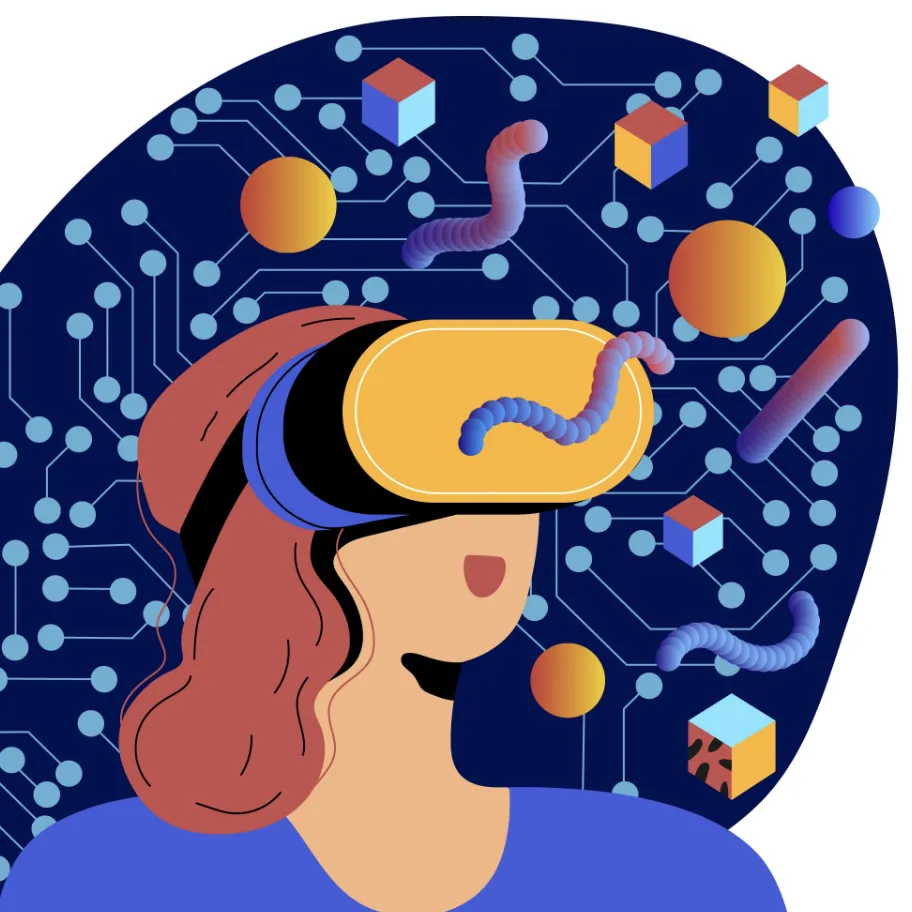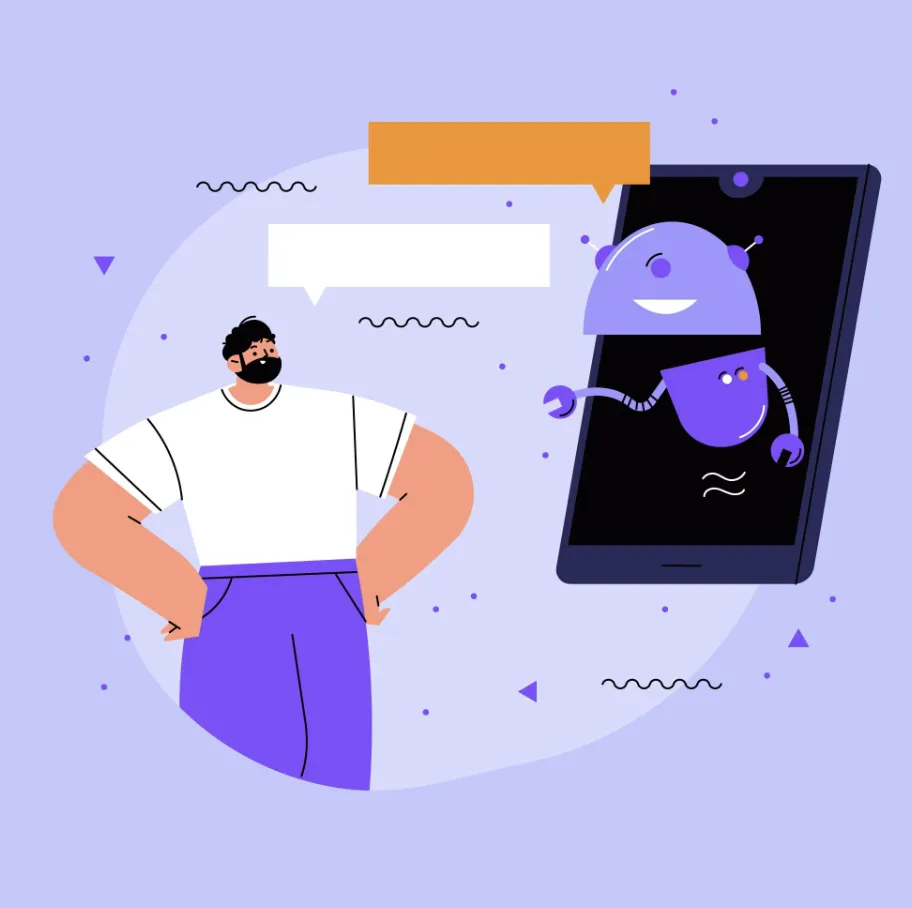Best AI Accessibility Tools for People with Disabilities
Discover top AI accessibility tools transforming lives for people with disabilities in 2025.
AI is revolutionizing accessibility for people with disabilities. From voice recognition to smart navigation, these tools remove barriers and create new possibilities.
Modern AI doesn't just enhance existing assistive technologies. It becomes a powerful accessibility tool itself, offering personalized support that adapts to individual needs.
This guide covers the best AI accessibility tools available today. You'll discover practical solutions for communication, learning, navigation, and daily living tasks.
Summary
- Why AI Transforms Accessibility
- Best AI Tools for Students
- AI Solutions for Educators
- Communication and Speech Tools
- Visual and Reading Assistance
- Navigation and Mobility
- Top AI Platforms
- Implementation Tips
- FAQ
- Conclusion
Why AI Transforms Accessibility
AI accessibility tools work in three key ways. They remove barriers between users and tasks, support diverse communication styles, and provide personalized assistance.
Unlike traditional assistive technology, AI learns and adapts. It understands context, recognizes patterns, and makes intelligent decisions based on user behavior.
This adaptability creates truly customized support. The technology improves with use, delivering increasingly effective assistance over time.
Best AI Tools for Students
Writing and Reading Support
AI writing assistants like Grammarly offer comprehensive support for students with learning disabilities. These tools identify spelling errors, suggest improvements, and explain changes clearly.
Reading assistance has evolved beyond basic text-to-speech. Tools like Speechify and NaturalReader create summaries and outlines, helping students review key concepts effectively.
| Tool | Best For | Key Features | Cost |
|---|---|---|---|
| Grammarly | Writing support | Grammar check, style suggestions | Free/Premium |
| Speechify | Reading assistance | Text-to-speech, summaries | Free/Premium |
| NaturalReader | Audio learning | Multiple voices, speed control | Free/Premium |
| Microsoft Copilot | Organization | Task breakdown, scheduling | Subscription |
Classroom Communication
Real-time transcription tools revolutionize classroom access for deaf and hard-of-hearing students. These systems provide immediate access to lectures and discussions with high accuracy.
For more insights on AI learning tools, check our guide on how to learn programming effectively.
Executive Function Support
AI tools break down large assignments into manageable steps. They create personalized schedules and set reminders to keep students organized and on track.
AI Solutions for Educators
Content Creation Tools
Speech-to-text technology in Microsoft Office and Google Workspace enables educators to draft materials using voice commands. This supports those with vision, language, or dexterity challenges.
Predictive typing features streamline written communication. They suggest contextually appropriate words, boosting productivity for educators facing typing difficulties.
Research and Analysis
Generative AI tools like Microsoft Copilot assist with data analysis. They convert color-based charts into accessible formats for colorblind educators.
Research tools simplify literature reviews by summarizing articles and highlighting key insights. This proves especially helpful for educators with visual or language disabilities.
Our AI prompts guide offers techniques for creating effective educational content with AI assistance.
Communication and Speech Tools
Adaptive Speech Recognition
Voiceitt learns individual speech patterns, enabling clearer communication for people with cerebral palsy, ALS, or stroke-related speech changes. The AI adapts to non-standard pronunciation and speech rhythms.
Text-to-speech platforms like Play.ht and Murf generate realistic voices with emotional range. Users choose from hundreds of voices or create custom profiles matching their communication style.
Predictive Communication
Apps like Predictable use AI to anticipate text and phrases. This dramatically speeds up communication for people with conditions affecting speech or motor control.
- Word prediction based on context
- Learning from individual usage patterns
- Phrase completion for common expressions
- Symbol-to-speech conversion
Voice-Activated Assistants
Amazon Alexa, Google Assistant, and Apple Siri provide independence through voice commands. Simple phrases control lighting, appliances, and entertainment systems.
Visual and Reading Assistance
Object and Text Recognition
Microsoft's Seeing AI uses smartphone cameras to describe people, text, and objects in real-time. The app reads printed text aloud and identifies currency denominations.
AI image recognition generates detailed descriptions of visual content. While current systems identify objects and basic scenes, human oversight ensures context-appropriate descriptions.
| Tool | Function | Accuracy | Platform |
|---|---|---|---|
| Microsoft Seeing AI | Visual description | High | iOS/Android |
| Read Easy.ai | Text simplification | Medium | Web |
| Color Oracle | Color contrast | High | Desktop |
| NVDA + AI | Screen reading | High | Windows |
Reading Comprehension
AI reading tools like Read Easy.ai simplify complex text while maintaining essential meaning. They analyze readability and suggest improvements for better comprehension.
For creating accessible visual content, see our image prompts guide for AI-powered design techniques.
Navigation and Mobility
Smart Navigation
WheelMap uses AI to crowdsource wheelchair-accessible space information. Users plan routes and activities with confidence using real-time accessibility data.
Navigation apps incorporate accessibility data for routing options. They consider mobility needs, surface conditions, and barrier-free access points.
Home Automation
Voice-controlled systems manage complex routines involving multiple devices. They adjust lighting, temperature, security systems, and communication devices automatically.
- Learning user preferences over time
- Anticipating needs based on daily patterns
- Emergency response integration
- Health monitoring capabilities
Wearable Technology
Smartwatches and fitness trackers use AI for health monitoring. They analyze heart rate, sleep data, and activity patterns for healthcare providers.
Top AI Platforms
Comprehensive Solutions
Stark integrates accessibility checks into design workflows. The platform identifies potential issues 10 times faster than traditional methods.
accessiBe uses AI for automatic website remediation. The system makes intelligent adjustments that improve accessibility without breaking design elements.
UserWay combines AI detection with 24/7 monitoring. The platform maintains WCAG compliance while providing real-time fixes for common barriers.
Development Tools
AudioEye combines AI automation with human expertise. This hybrid approach acknowledges AI limitations while maximizing efficiency.
| Platform | Approach | Best For | Integration |
|---|---|---|---|
| Stark | Design-first | Developers | Design tools |
| accessiBe | Auto-remediation | Websites | WordPress, Shopify |
| UserWay | Monitoring | Compliance | Web platforms |
| AudioEye | Hybrid | Enterprise | Custom solutions |
Implementation Tips
Getting Started
Start with free built-in accessibility features in your operating system. Windows, macOS, and mobile devices include powerful AI-enhanced tools.
Test multiple options before committing to paid solutions. Many tools offer free trials or basic versions for evaluation.
Best Practices
- Combine AI tools with human oversight for optimal results
- Train AI systems with diverse user input
- Regular testing ensures continued effectiveness
- Stay updated on new features and improvements
Integration Strategies
Layer AI accessibility tools for comprehensive support. Use reading assistance with writing tools, navigation aids with communication apps.
Consider workflow integration when selecting tools. Choose solutions that work well with existing software and processes.
For technical implementation guidance, explore our comprehensive AI tools review.
FAQ
What are the best AI tools for students with disabilities?
Top AI tools include Grammarly for writing support, Speechify for reading assistance, Microsoft Copilot for organization, and real-time transcription tools for classroom accessibility.
How does AI help people with visual impairments?
AI provides image recognition, text-to-speech, real-time object identification through apps like Microsoft Seeing AI, and automated alt-text generation for better web accessibility.
Which AI communication tools work best for speech disabilities?
Voiceitt adapts to non-standard speech patterns, while predictive text tools and AI-powered AAC devices reduce typing and improve communication speed.
Are AI accessibility tools expensive?
Many AI accessibility tools are free or low-cost, including built-in features in Windows, macOS, and mobile devices, plus affordable apps like Speechify and Grammarly.
Can AI replace human accessibility support?
AI enhances accessibility but cannot fully replace human judgment. The best solutions combine AI automation with human oversight for optimal results.
Conclusion
AI accessibility tools are transforming lives by removing barriers and creating new possibilities for people with disabilities. From communication aids to navigation assistance, these technologies offer personalized support that adapts to individual needs.
The most effective approach combines AI capabilities with human insight and community input. As these tools continue evolving, they promise greater independence, creativity, and connection for people with disabilities worldwide.

